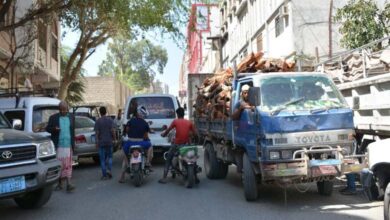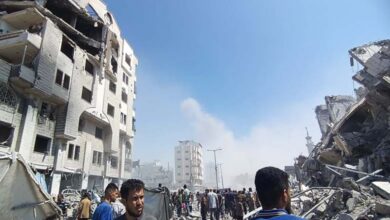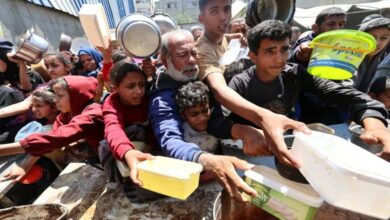The United Nations Utilizes Israeli Military Route to Transport Aid into Gaza
A UN official confirms Israel's increased cooperation in aid transportation since the deaths of 100 people while searching for food

A senior UN relief official stated that the organization will assess today, Thursday, the use of an Israeli military route adjacent to the Gaza Strip to deliver aid to hundreds of thousands of civilians stranded in the northern area.
The UN warns that at least 576,000 people in Gaza, representing a quarter of the population, are on the brink of famine.
Jamie McGoldrick, the UN’s aid coordinator in the occupied Palestinian territories, said the UN has been pressing Israel for weeks to use a route along the border fence with Gaza, and it has received greater cooperation from Israel in the past week.
Palestinian officials say over 100 people were killed last Thursday while seeking food from an aid convoy near Gaza City, most of them shot by Israeli forces. The Israeli army, overseeing the aid delivery, claims most died in a stampede.
McGoldrick told journalists, “Since the incident last week, I think Israel has clearly realized the difficulty in providing assistance,” adding that the UN has witnessed “much greater cooperation from Israel as a result of this realization.”
Aid can currently reach southern Gaza through the Rafah crossing from Egypt and the Kerem Shalom crossing from Israel. The UN official explained that the plan is to inspect aid convoys at the crossings and then escort them through Israel along a military route to the Israeli-bordering village of Be’eri.
-
Tragic Disaster… Witnesses of the Flour Massacre Describe Scenes of Horror, Chaos, and Death in Gaza
“After entering Gaza, we will then leave them to proceed on their own,” he added, stating that the UN will assess the potential new route today, Thursday, to check the road conditions inside Gaza to ensure there are no unexploded ordnances and to identify suitable distribution points for aid.
McGoldrick said that using this route to reach the northern Gaza Strip allows aid convoys to avoid blocked roads and deteriorating security conditions within the territory. The UN World Food Programme suspended aid deliveries to the northern Gaza Strip on February 20 due to safety concerns, as its convoys were being attacked by crowds suffering from hunger.
He added that other aid avenues, including the Israeli port of Ashdod and airdrops from the United States and Jordan, “are helpful but cannot meet the huge needs, which can only be addressed through land transport.”
The United Nations Relief and Works Agency for Palestine Refugees (UNRWA) reported that approximately 97 trucks on average entered Gaza daily in February, compared to about 150 trucks daily in January, far below the target of 500 trucks daily.
Israeli government spokesman Elon Levy said yesterday, Wednesday, that there is no limit to the amount of aid that can enter Gaza, urging donors to “send aid, and we will let it in.”
Levy told reporters that “Israeli crossings can inspect 44 trucks per hour” and added, “The problem is distribution. The UN is struggling to distribute aid at the pace allowed by Israel.”
He said Israel “is working on new strategies in cooperation with the private sector inside Gaza to deliver aid to those in need” and that more than 12 trucks carrying food supplies headed to northern Gaza yesterday, Wednesday, in coordination with Israel.
The latest war in Gaza began after fighters from the Islamic Resistance Movement (Hamas) attacked Israel on October 7, resulting in the deaths of about 1,200 people and the detention of 253 hostages, according to Israeli statistics.
Israel responded by imposing a “full blockade” on Gaza initially and launched air and ground attacks that have since led to the deaths of about 30,000 Palestinians, according to health authorities in the Hamas-run territory.












